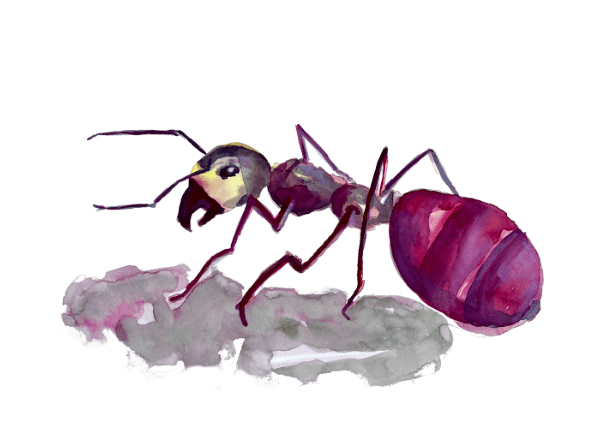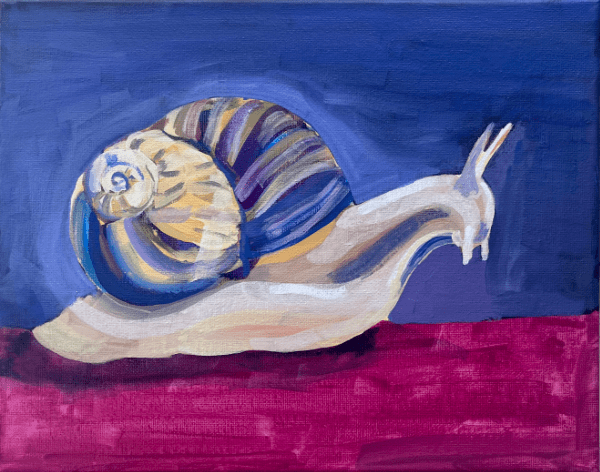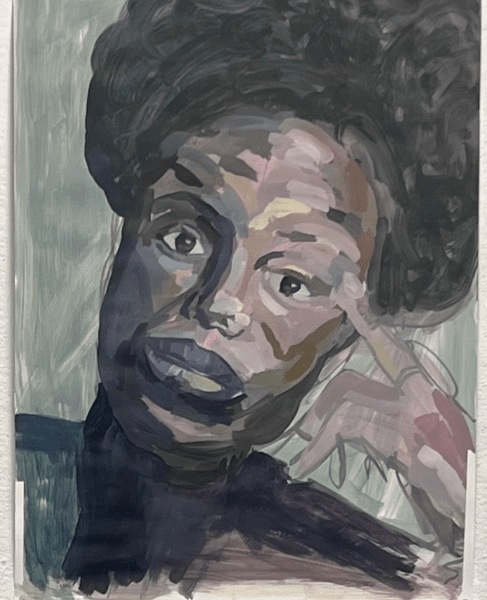2023 Year in Review: My new seven key insights to challenge your creativity
After I hadn't been drawing for myself a lot in 2022, it changed in 2023. Last year has been quite a creative journey.
I enjoy sketchnoting and making complex information easy to understand. Still, I also like the loose "fine art" side of drawing and painting. It fosters playful experiments that wouldn't be possible with the sketchnote projects I do for clients.
The drawing started with a daily sketching challenge that I initiated in February. We jumped into one month of daily sketching. The rule was simple. It didn't matter if we'd only sketched something in two minutes or took much longer. Most importantly, we'd use every day of the month to practice and get something on paper.
You probably have heard the saying, "Most people overestimate what they can do in a day and underestimate what they can do in a year." That's not how to do it.
All you need to do instead: Get started and make small steps.
Looking back later, you realize how far you have come. When you do one sketch every single day, you'll have drawn 365 sketches at the end of one year. Which is a lot of practice. Your skills will have improved after those 365 days of training. At least, that is what happened to me.
In this post, I share the seven insights that challenge your creativity. It's what I've learned during the last year of sketching.
1. Choose your perspective. (You can always change it.)
If you have drawn your favorite objects a few times, you might be ready for a change?! Taking a different perspective is helpful when communicating with others. It also brings new ideas when you need more motivation to draw.
Imagine you have a sacred space in your home, like your favorite chair, and you have drawn it already. Why not draw it again, since it gives you a good emotion? That situation could be an excellent moment to look for a new perspective. You could choose a different angle to observe and draw or start experimenting with your imagination:
How would the chair look from above?
Or if you were an ant: How would you see the chair from the ant's eyes?
You can always change your perspective when you need new thoughts. It will turn out interestingly and give you tons of new ideas.
I tried it by myself and used the frogs' and birds' perspectives:
2. Doing art is about progress and not perfection.
People who just start out with sketching often look for quick ways to improve. They've just started expressing their creative voice but already want to produce perfect results. Unfortunately, it doesn't work that way.
The one thing I learned from doing art for a few years now is that art is about patience and practice.
When I used to do graphic recordings, some people would always approach me to tell me how talented I was and that they admired creatives for their work. It is as if we were born with a fixed set of talents that define who we are and what we'll be good at later in life.
I wonder where this idea comes from.
You don't get born with a fixed skillset and then just follow doing your thing.
Art is a very often slow process of self-discovery. You try out many things and, more importantly, you usually practice a lot. So it's not your talent that decides where you're getting to, but the work you're willing to do. Once you are ready to do the work, you still won't find perfection initially. And you shouldn't want to. Because you probably don't know where you will be arriving at the end anyway.
The artistic journey is about getting better every day and learning what you want to do more of. Perfection will come much later. It's easier said than done, but try to enjoy the process.
I learned that my creative results improve when I do not take my art too seriously. When I'm ready to play and to experiment. That's when new energy enters the room, and the flow starts. Ever tried to get there?
The gouache sketch of Stuttgart's skyline that I painted in March was one of the examples when everything suddenly became easy.
3. Online courses are great to get inspired.
One of the biggest challenges for my daily practice is to find inspiration. It becomes easier when you're already interested in specific topics or objects. Many of the famous painters have done series on topics that were interesting for them.
The problem is that I haven't figured out a specific topic I want to explore further yet. This indecisiveness sometimes overwhelms me as I've so many choices to work on that it's tough for me to decide.
Last year, I realized that online courses are a great and inexpensive way to learn more about how artists work and how they use the material. Also, they share what they work on, and usually, you'll practice on examples that those artists provide.
I can fully recommend courses on Domestika (unpaid promotion). The course of the illustrator Aljoscha Blau is a great one. He explains how to work with Gouache. (And he clearly over-delivers.)
The ant you see in the post is one of my drawings after I took the course.

4. Use the warm seasons to spend time drawing outdoors.
If you've heard of "Urban sketching" before, you know that drawing outdoors in urban places has become a discipline. Urban sketching is a community that organizes worldwide meetups in cities to draw together. Sketching outdoors is fun for me, too. But I get bored when surrounded by all the architecture that urban sketchers are often interested in.
The idea of drawing outdoors is nothing new. To draw and paint pleinair is what old masters like Leonardo da Vinci and Monet already did. You can do it anywhere, and of course, you can draw anything.
In 2023, I drew a lot of animals and sometimes also other objects like old tractors as this one:
5. Traveling is perfect for starting a sketchbook.
I had the chance to travel a lot last year, which I loved because traveling always inspires me. I can't think of a better way than to explore a foreign city with a sketchbook to draw out what I see, feel, and hear.
A travel journal is an excellent way to start if you want to be creative. Noting down your experiences, the places you visited, and the food you ate makes your sketchbook a wonderful diary, and you'll enjoy it later at home. Alone and with friends and family.
With a sketchbook in your hands, you'll get in touch with other people.
In the street scene, you see in the post below, a beautiful moment happened. I sat in a cafe with my felt tip pens, a sketchbook, and a big window view to draw the scene. Suddenly, a class of eight-year-olds stopped in front of me - on the other side of the glass to show me with a thumbs up that they loved my choice of pens. And every single one of them gave me a big smile and a heart gesture while the group continued walking. Those kids made my day!
Later that year, I drew a towing truck. I had observed the driver while he was getting a big car on his vehicle rapidly. As usual, I posted the picture on Instagram. A few minutes later, a man replied, "Hey, that was me driving! Very cool, this made my day, thank you ". Isn't that cool?
Those stories happen when you're getting the things that somehow speak to you down on paper and when you have the courage to show it.
6. Drawing animals is fun and works perfectly for playing with different materials.
I spent quite a few hours out in the fields studying cows, hens, goats, and horses last year. That inspired me to look at how other animals could be drawn in different ways. I experimented with all the material I could find: fountain pens, fine liners, pastels, acrylics, reed pens, felt pens, oil colors, etc. For at least two months, it became my daily task to find a new way of showing the animals on paper.
There's always something you can learn from drawing animals.
If you need some inspiration, my animal drawings might help you. They ended up in the book on how to draw 100 animals step by step (there is also an English version available on Amazon).

7. Learning never stops
While one year of daily sketching seems like a massive project, for me, it feels like a few drops of ink in a sketchbook. After I reviewed the artwork I did last year, I again realized that the journey never ends. There is no shortcut to perfection.
In December 2013, I took a painting workshop and realized that painting is something I want to learn to master better.

A portrait painting I did in the workshop. It still needs to be finished.
If you can:
Stay playful and curious while you draw or paint the subjects that matter to you.
Happy drawing and let me know about your artistic process, if you want.
